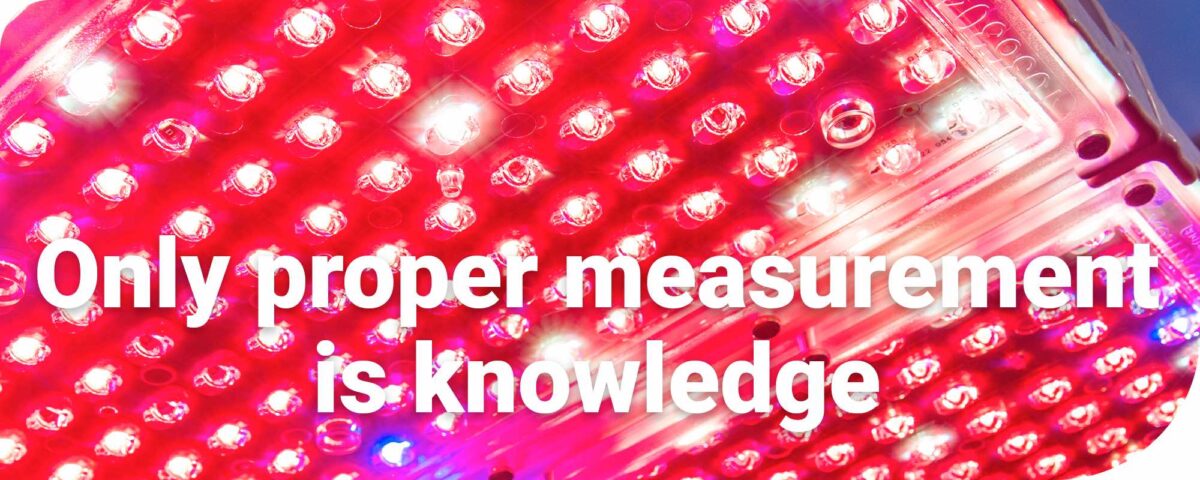The crop grows and produces optimally when there is a good balance between the production and consumption of assimilates. As a grower, you can control this balance.
PAR light measurement

We published an e-book to give growers more understanding about the possible ways to improve the distribution and uniformity of light in your greenhouse and learn what the best lighting strategy is for your crops. The first chapter of the e-book “How artificial lighting can optimize efficiency” is zooming in on the various types of heat coming from lighting, and the differences between HPS and LED lighting. You can read the preview here.
This second chapter will continue to enlighten growers as it talks about the importance of matching the temperature with the available light. This can help you to produce a good crop by balancing the assimilates (sugars). In the chapter, the Plant Empowerment lighting experts will detail how measuring PAR (Photosynthetically Active Radiation – radiation that the plant can use for photosynthesis) is an important part of this process.

Preview
Controlling the balance between the production and consumption of assimilates will help your crop to grow and produces optimally. One way of doing this is by matching the temperature to the available light. This is only possible if you have a good overview of the light sum.
The amount of light determines how much sugar can be produced assuming that CO2, and moisture supply are in order. Next to that, growth, development, and respiration are very sensitive to temperature. The higher the temperature, the faster the growth and development, but also the respiration.
For good control, it is important to know how much PAR light the crop receives at a certain moment and during the day.
Controlling the balance also means taking into account the RTR: Ratio Temperature to Radiation. There must always be a balance between the amount of PAR light that the plant has received, the light sum, and the 24-hour temperature.
With these considerations in mind, it is understandably important to measure PAR accurately, so you can choose the right growing strategy.
Want to learn more?
Want to get all the knowledge about PAR light, controlling the balance by taking account of the RTR, and measuring the light in your greenhouse in the right way? Get the full four-part e-book, and enrich yourself with in-depth knowledge and practical examples about lighting.
Get the e-bookAbout the e-book
To understand more about the possible ways to improve the distribution and uniformity of light in your greenhouse and learn what the best lighting strategy is for your crops, we’re published an e-book that is going more into depth about the role of lighting in your greenhouse. This e-book is very useful for all kinds of growers around the world with insufficient or only just little knowledge about lighting, because the more you understand about this topic, the easier it is to spot new ways in which you can save energy without compromising on crop performance.
The e-book is written by several grow-light specialists from Plant Empowerment Implementation Partner Hortilux Schréder, who are keen to share their expert knowledge around the world. These specialists are willing to help all growers using artificial lighting more effectively and obtain the maximum results out of their usage of grow light (LED, HPS, and hybrid).
More information
